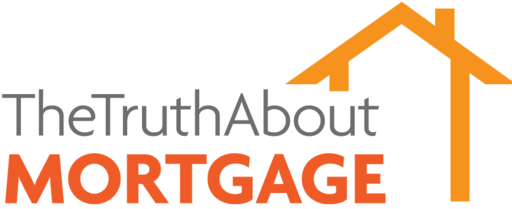Now that the 50-year mortgage has been thoroughly panned and debunked as a viable affordability solution, we’re on to the next silly idea.
What is it? Well, “portable mortgages” of course, where you can take your home loan with you from property to property.
They actually exist, but not in this country. Only in Canada and the United Kingdom will you find them.
And even then, I wonder how many folks actually use them there. They just aren’t that practical.
Here in the United States, they would likely be impossible.
How a Portable Mortgage Works
- You take your existing mortgage with you to the replacement property
- Get to enjoy the same interest rate and loan term on new property
- Must sell old home and buy a home in a short window of time (and re-qualify)
- The ported mortgage may require a down payment or second mortgage for financing to work
Unlike an assumable mortgage, which a home seller can transfer to a buyer, a portable mortgage is something you can take with you to the next property.
So if you’re an existing homeowner looking to sell, you can port your mortgage over to the replacement property when you sell.
However, like an assumable mortgage, there will still likely be a gap between the outstanding loan balance and purchase price.
For example, if your current loan balance is $300,000 and you want to buy a home for $400,000, you could port the mortgage over to the new property.
That would leave a shortfall of $100,000, which would need to be accounted for either by making a down payment or taking out a second mortgage.
While that all sounds workable, the issue with portable mortgages in the United States is the fact that we rely upon long-term fixed-rate debt.
The most common home loan type in the U.S. is the 30-year fixed. This means a homeowner could effectively take out one mortgage per adult lifetime.
Had they taken out a 2% 30-year fixed a few years, they could keep it for life and apply it to new properties.
Yes, they’d maybe have a shortfall and require down payment funds or a second mortgage, but they’d generally never need another mortgage again.
Not sure banks and mortgage lenders would love that idea. They do appreciate a little volume.
Canada and the UK Don’t Have 30-Year Fixed Mortgages
Meanwhile, in places like Canada and Britain where portable mortgages are permitted, they rely upon variable-rate debt and so-called fixed mortgages that only last 3-5 years.
Yes, they are technically fixed, but only during the first few years before the borrower must either pay it off, renew it, or renegotiate it.
It’s a lot different than our actual fixed-rate mortgages that are fixed for the entire loan term, typically 30 years.
The Canadian fixed mortgages often last 3-5 years but feature a 25-year amortization, meaning it’s not really fixed.
It kind of reminds me more of our hybrid adjustable-rate mortgages, such as the 5/6 ARM or 7/6 ARM.
You have to act after the initial 3-5 years to lock in a new rate or switch products or pay the thing off.
The mortgages in the UK and Canada also feature prepayment penalties and mortgage exit fees, which is completely different than here.
As such, lenders are happy to offer portable mortgages to these homeowners because they’re not nearly as valuable.
If anything, it sounds like the borrower kind of has to keep the mortgage to avoid being penalized.
The thought that we could just take our super low-rate mortgage from property to property is actually ludicrous.
And even if it was somehow permitted, it wouldn’t be retroactive so you’d be looking at being able to keep a 6-7% mortgage rate.
In addition, mortgage rates would likely be higher all else equal if portability was built into the rate.
The Housing Market Simply Needs Time to Correct, Not More Gimmicks
After the 50-year mortgage debacle, which apparently embarrassed Trump and the White House, we’ve quickly jumped to another quick fix.
Today, FHFA Director Bill Pulte said on X, “We are actively evaluating portable mortgages.”
It’s unclear why he keeps trying to find a silver bullet when it’s clear the housing market simply needs time.
We aren’t going to fix things overnight. We have millions of homeowners with ultra-low fixed-rate mortgages that aren’t leaving.
This lock-in effect won’t be lifted by portable mortgages. They just aren’t viable, and as I said, they won’t be applied retroactively.
The assumable mortgage has some promise, and companies like Roam are making them more accessible, but even then it’s a drop in the bucket.
Nobody wants to hear the truth, but the truth is it’s just going to take time for wages to catch up to home prices.
It’ll be a slog, though we’ve already seen mortgage rates drift down from 8% to just above 6%, and there’s a chance they could make their way into the 5s and beyond soon.
That will help boost affordability, especially if home prices remain flat and/or even fall some in certain metros.
It’s not some neatly packaged solution we can present to the American public, but it’s the reality we face today.
(photo: Alan Levine)
- Portable Mortgages Don’t Work in the United States - November 12, 2025
- A Small Rate Buydown Makes the 30-Year Fixed Cheaper Than a 50-Year Mortgage - November 11, 2025
- Trump’s 50-Year Mortgage Is Admission He Can’t Deliver 3% Mortgage Rates - November 10, 2025

